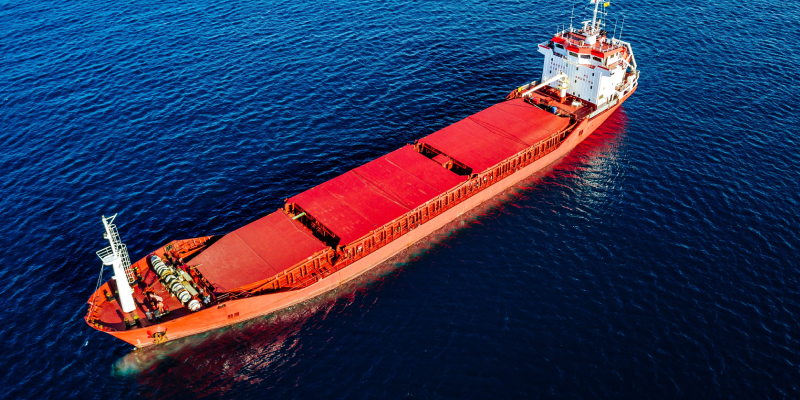The Shipping Industry: Going Green in the Deep Blue Sea
The Shipping Industry: Going green in the deep blue sea.
Here we are, we’ve finally reached the “point of no return”, the point where we cannot undo the harm we’ve caused to our planet. Global warming is something inevitable, happening now and its effects are felt in every part of our lives, wherever we are located.
Hurricanes, heat waves, rising sea levels, forest fires, icebergs melting, entire species going extinct,…
None is safe from the wrath of Mother Nature.
But also, nothing is gone forever and we cannot sit and wait for the apocalypse to happen, instead, measures are being taken to slow the process down.
The International Maritime Organization started to implement new and effective plans fast to reduce carbon dioxide emission and eventually stopping it definitively.
Let us explore the details of this plan and what action plans have been stated to let the shipping industry contribute to the global reduction of carbon dioxide in the atmosphere in the most efficient ways possible.
First: Let’s start with quick facts about the shipping industry’s contribution in gas emission
In the past, and with the increase in demands of international shipments, freight traffic volume increased by 101% during the last 20 years. This is a number that is expected to keep on increasing as consumerism is reaching all-time highs.
Now with this increase in demand, gas emissions have seen a gradual rise as ships are getting much bigger in size and efficiency
Let us point out that shipping is the least emitting mode of transport, with it only covering 3% of global annual emissions.
What’s the plan?
Talks surrounding carbon emission started to echo in the shipping world, as industry leaders started planning for a “Net-zero” carbon emission by 2050.
This may sound impossible to achieve, given the fact that there is only 30 years left. This is why the IMO and UN have put an easier plan to reach: reduce emissions from international shipping by 50% by 2050.
Of course this may sound very ambitious, but also governmental regulations should also be put together and most importantly, the shipping industry has to find an efficient way to keep on its same pace of work while changing the combustible they are using.
How is this goal achievable?
Before answering this question, it is important for us to know what type of combustible is being used today:
Ships have been using Heavy Fuel Oil for the past 50 years. This type of fuel is cheap, very widespread, easily accessible but also very dirty since its components come from oil refining residues.
Ever since the plan has been implemented, the IMO started monitoring emissions of the vessels. Nowadays, companies will be forced to use better, diesel-like components for their ships.
The presence of sulfure in the HFO (Heavy Fuel Oil) is estimated to be around 3.5% or 35,000 particles per million (ppm). By comparison, the Euro5 environmental diesel only releases 10ppm.
This is why, shipowners are facing a challenge: Adapting to the new requirements of the IMO and abiding by them.
Experts didn’t leave the shipowners to figure out methods and have given them the following changes they can implement:
- Equipping their ships with special Exhaust gas purifiers while still using the high-sulfur oil, the HFO. However, these purifiers must be equipped with high-standard material that could contain the toxic material and prevent it from leaving the exhaust. By the end of 2020, it was expected to have more than 4000 ships equipped with the purifier and this number is still on the rise, despite the slow-downs caused by the pandemic.
- More and more shipowners were tempted by the use of a new special fuel known as the Very Low Sulfur Fuel Oil or VLSFO for short. This oil is marketed as having 7 times less dulfur than the HFO and is more compliant to the standards of the IMO.
- Biofuels are also a great way to get the vessels to work: Biomethane, bioethanol and biomethanol all derive from plants and agricultural waste. Sure, biofuels emit carbon dioxide but they also reabsorb it when producing their feedstock, exactly like a lifecycle.
- Ammonia and hydrogen are known as being “zero-carbon fuels” and could be the future of the shipping industry. In fact: Blue hydrogen is made from natural gas. And all kinds of hydrogen can be used as fuel or processed into ammonia.
Why are ammonia and hydrogen seen as the “Future of the Shipping Industry”?
The process of decarbonisation is not easy and for sure doesn’t come at a cheap price: With estimates suggesting that the cost may cross the 1 Trillion USD bar.
However, should the shipping industry shift into the use of ammonia and hydrogen, this will turn the bunker fuel industry upside-down, creating new opportunities for developing countries.
Territories such as: Brazil, Malaysia and India can highly benefit from this, thanks to their significant amount of renewable resources.
This will shift the attention to developing countries more and more and will give them the opportunity to shine in this new-found gold mine.
In the end, it is important to note that none can predict the future. We remain hopeful that companies and governments make the effort to abide to the regulations instated by the IMO and UN in an attempt to save the planet and slow down the process of global warming as much as possible.
Back

